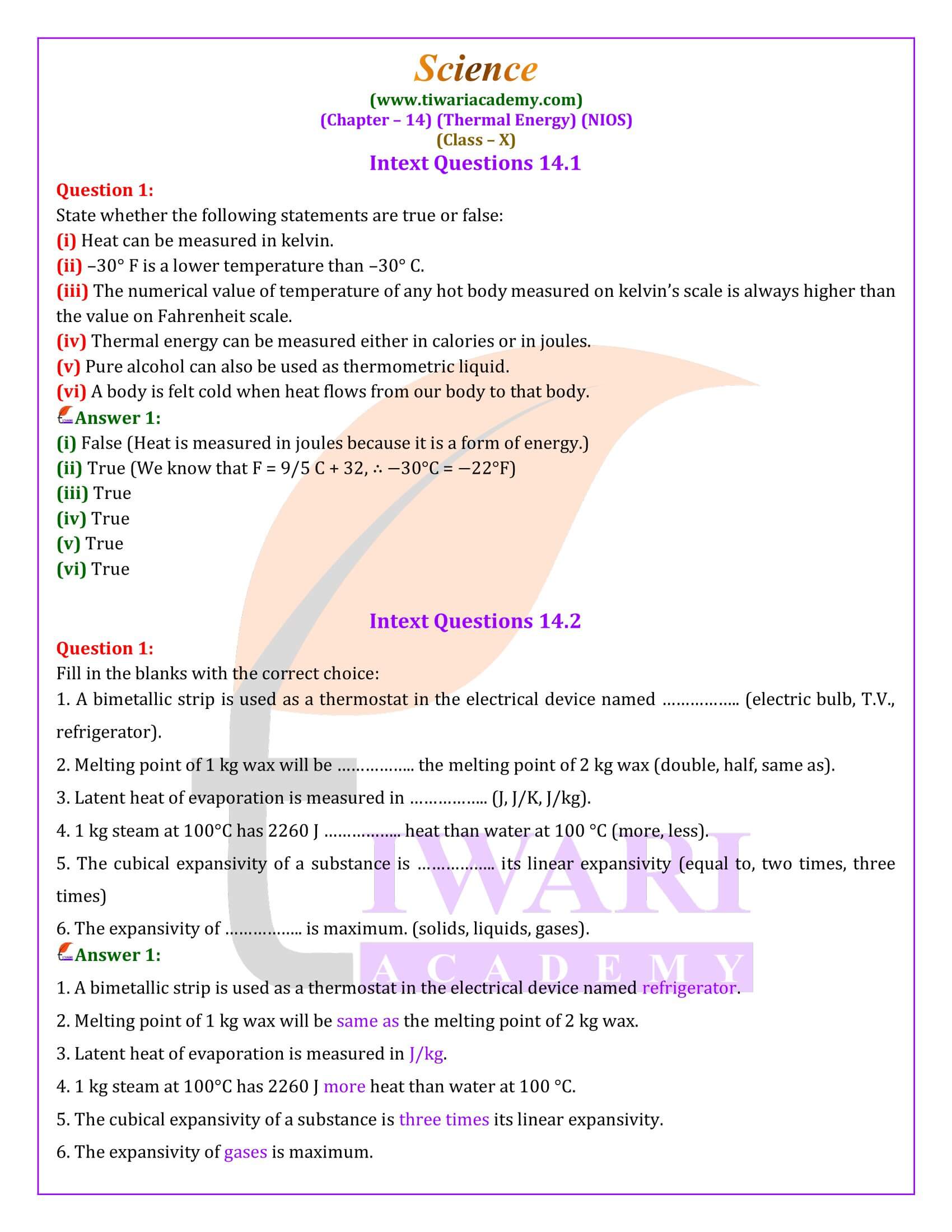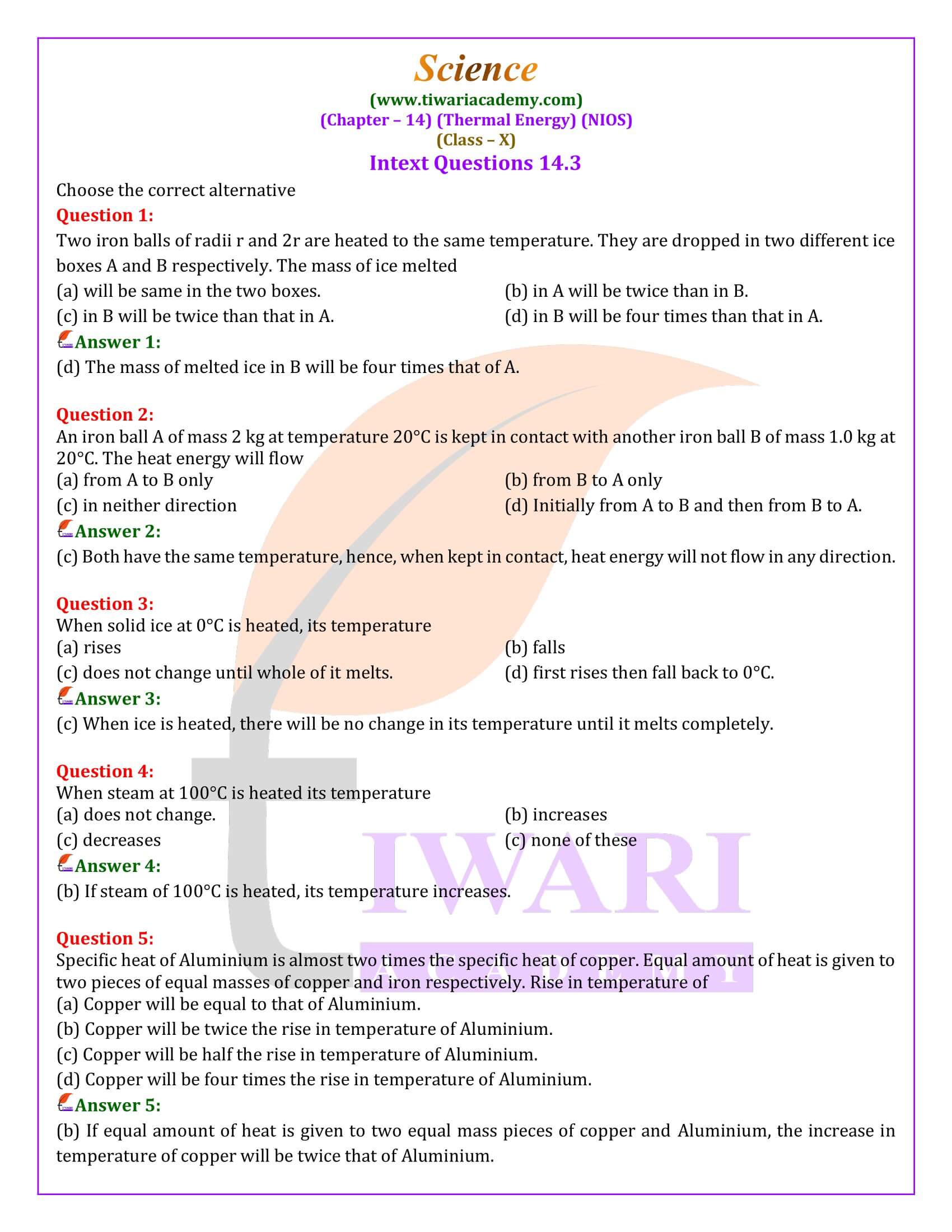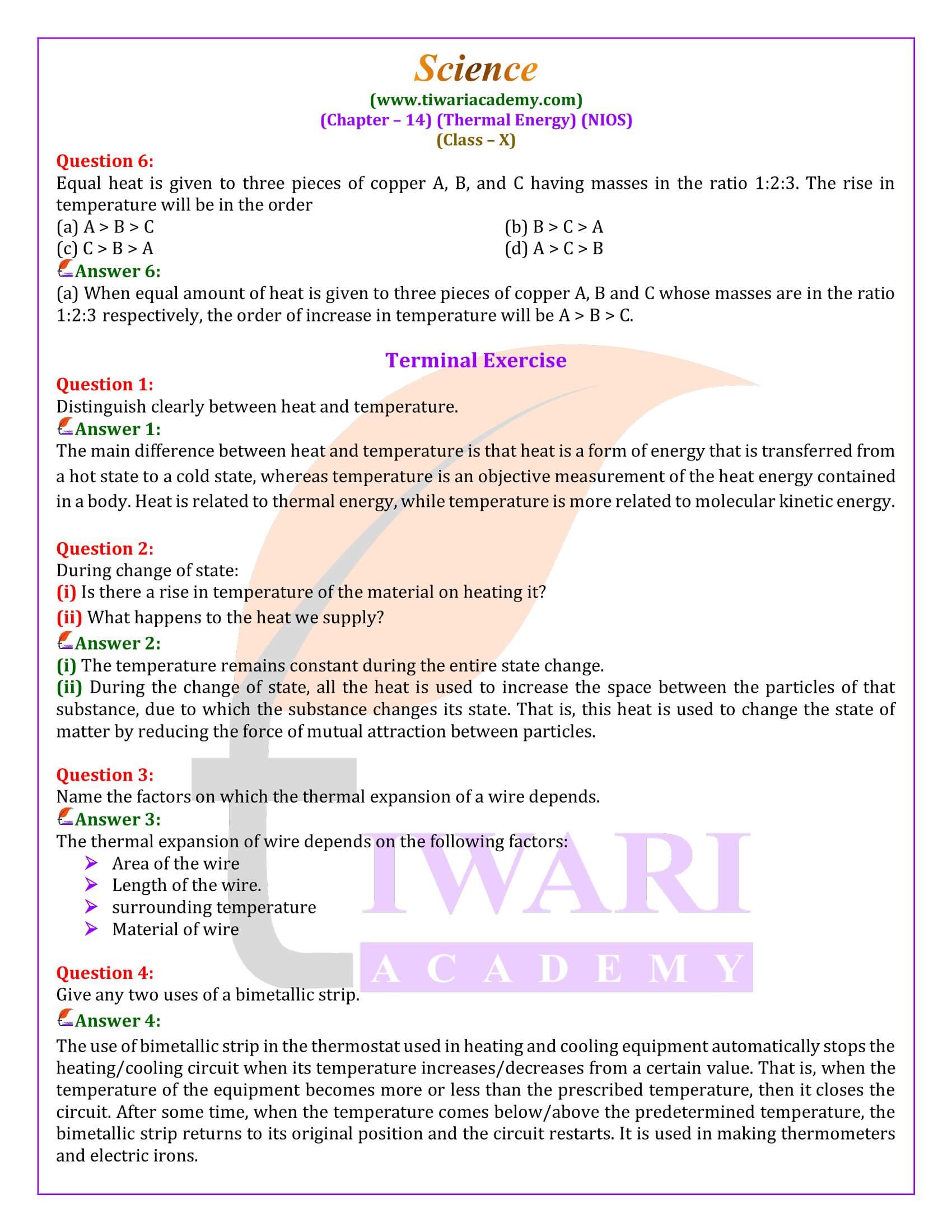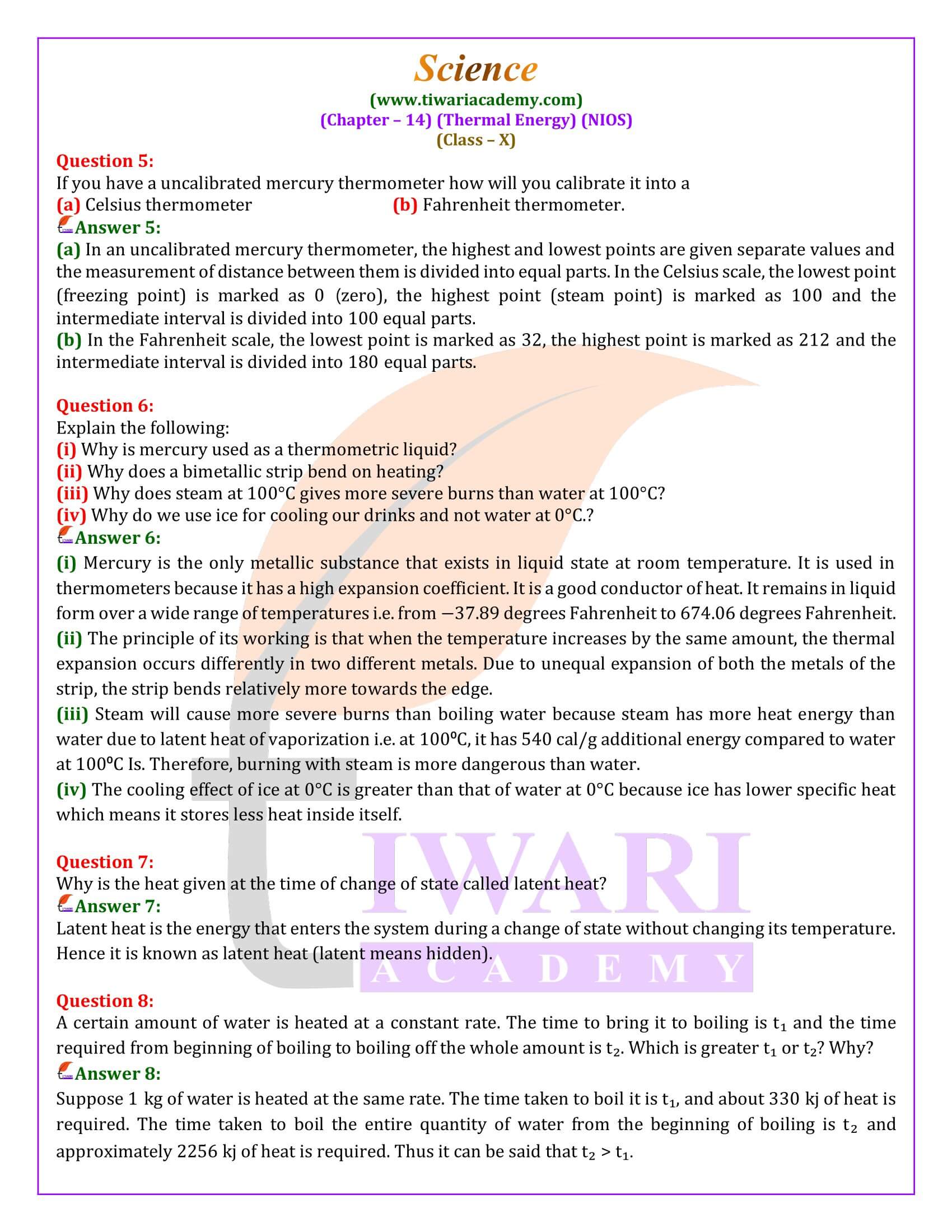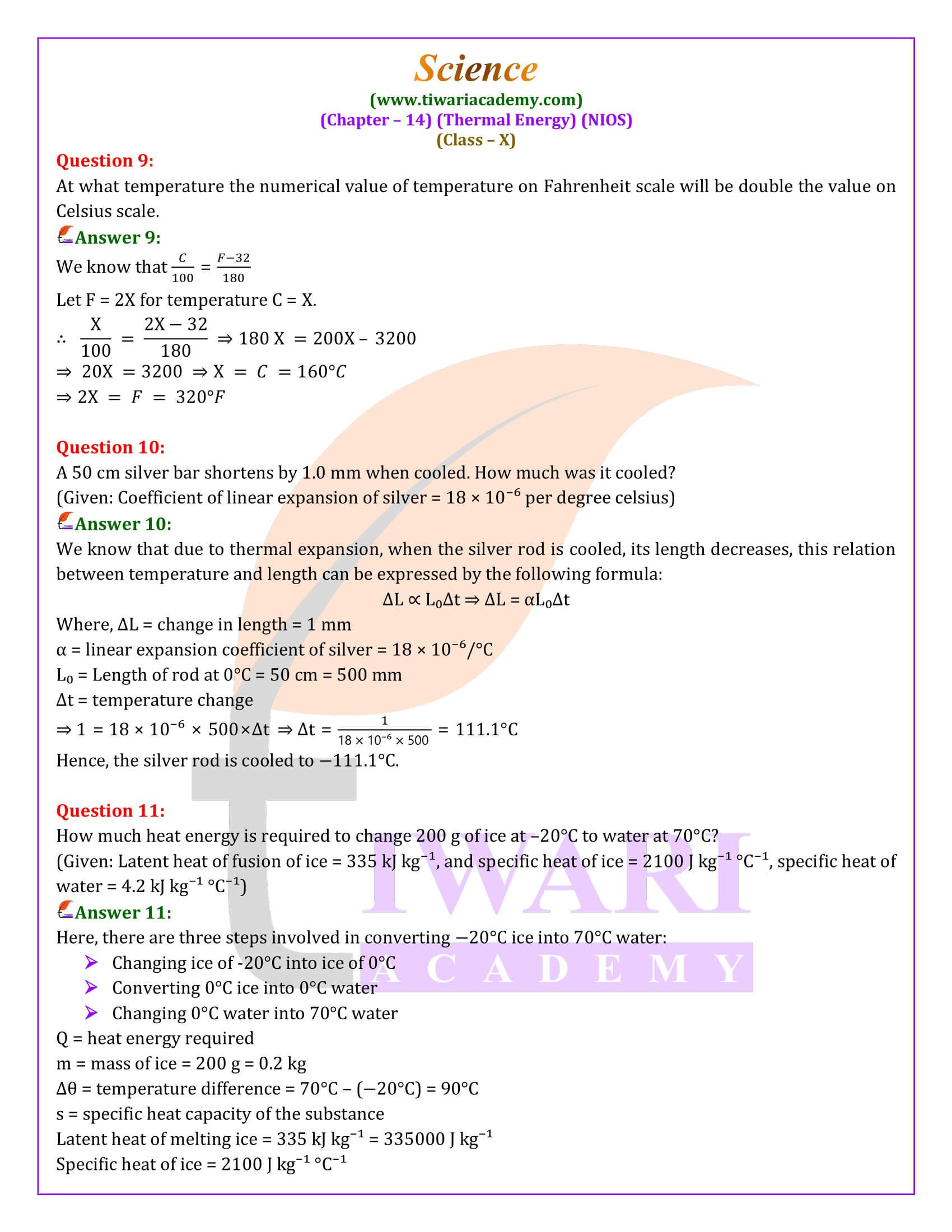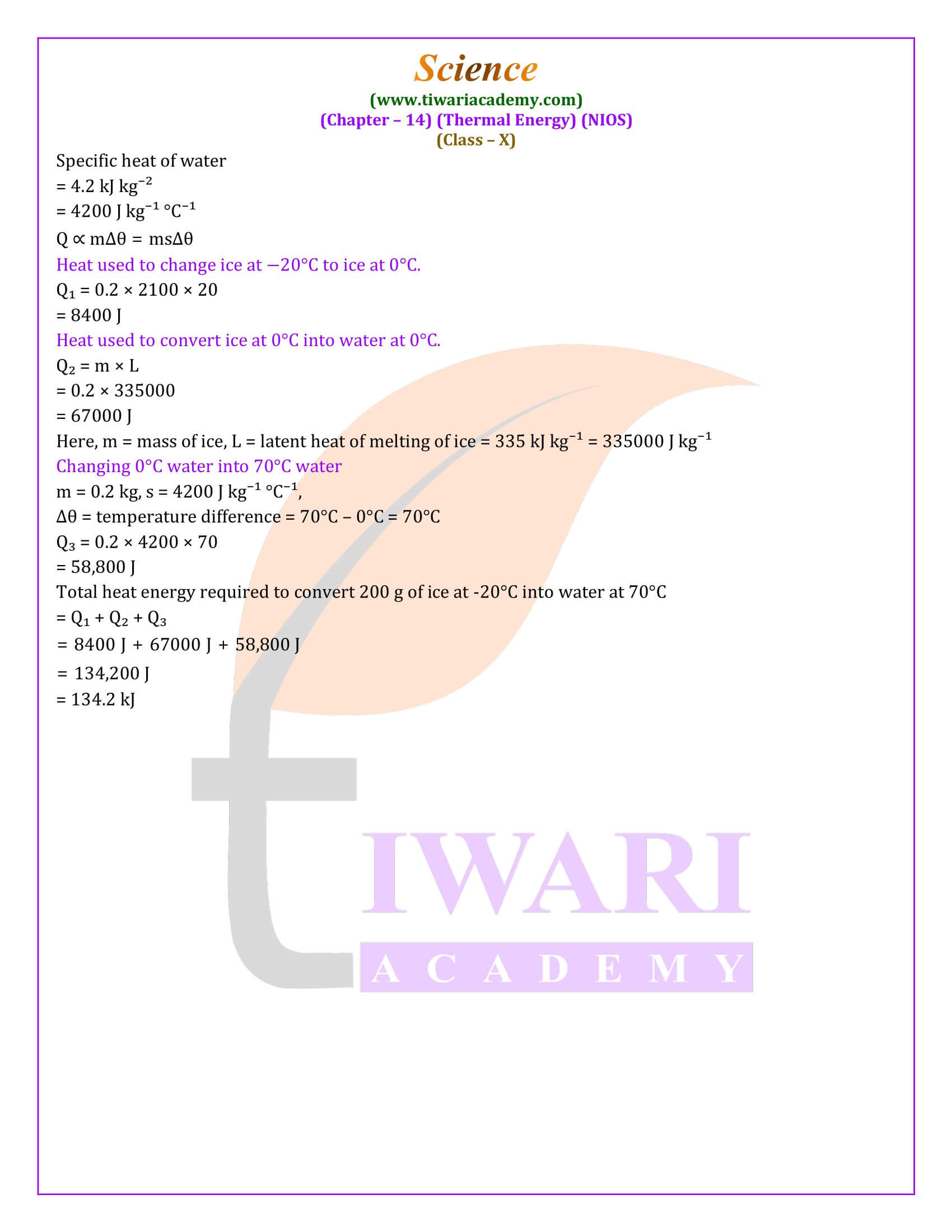NIOS Class 10 Science Chapter 14 Thermal Energy in Hindi and English Medium is updated and modified for new session. Get here NIOS Class 10 Science Chapter 14 Question Answers with explanation and examples.
Thermal Energy: Understanding Heat and Its Impact
Thermal energy, commonly known as heat, plays a pivotal role in our daily lives, influencing everything from the climate and agricultural productivity to the comfort of our homes. This energy form, discernible through the sensations of hotness or coldness, is central to various processes, including cooking, climate control, and industrial operations. The transmission of thermal energy – feeling hot when it flows into the body and cold when it flows out – underlies the necessity of clothing adjustments across seasons, like wearing woolen clothes in winter to minimize heat loss.
Heat Versus Temperature
A fundamental aspect of thermal energy is distinguishing it from temperature. While heat refers to the energy transferred between objects of different temperatures, temperature is a measure of an object’s hotness, quantified in degrees Celsius (°C), Fahrenheit (°F), or Kelvin (K). This distinction is crucial for understanding thermal phenomena, such as the change of state in materials (solid to liquid or liquid to gas) and the operation of thermometers.
Thermal Expansion and Its Applications
One of the most observable effects of thermal energy is thermal expansion – the increase in size of objects as they are heated. This principle is applied in various aspects of daily life and technology, from the construction of thermometers to architectural designs that accommodate the expansion and contraction of materials. For instance, gaps in railway tracks and the design of bridges incorporate allowances for thermal expansion to prevent structural damage.
Measurement of Temperature
The development of thermometers, devices that measure temperature, has been instrumental in both scientific research and medical practice. Different types of thermometers, including clinical, laboratory, and digital thermometers, serve various purposes, from diagnosing illnesses to conducting experiments and monitoring environmental conditions.
Heat Transfer and Thermal Equilibrium
Heat transfer is a key concept in thermodynamics, describing the flow of thermal energy from hotter objects to colder ones until thermal equilibrium is reached. The rate of heat transfer and the resulting changes in temperature depend on the materials’ specific heat capacities, a property that quantifies the amount of heat required to change a substance’s temperature by a certain amount.
Latent Heat and Change of State
When substances change state – from solid to liquid or liquid to gas – they absorb or release specific amounts of heat, known as latent heat, without changing temperature. This phenomenon is crucial for understanding processes like melting, boiling, and condensation, which have significant implications for various fields, from meteorology to culinary arts.
Practical Implications of Thermal Energy
The applications of thermal energy and principles of heat transfer are vast and varied. In daily life, they influence cooking methods, climate control systems, and even the efficiency of thermal insulation. Industrially, thermal energy is critical for power generation, manufacturing processes, and materials engineering.
Challenges and Opportunities
While thermal energy is indispensable, managing its flow and effects poses challenges, particularly in energy efficiency and environmental impact. Innovations in thermal insulation, renewable energy sources, and materials science offer pathways to address these challenges, optimizing the use of thermal energy for sustainable development.
Thermal energy, with its diverse effects and applications, is a cornerstone of both natural phenomena and human-made systems. Understanding its principles is essential for navigating the complexities of the physical world and harnessing its potential for innovation and sustainability.
